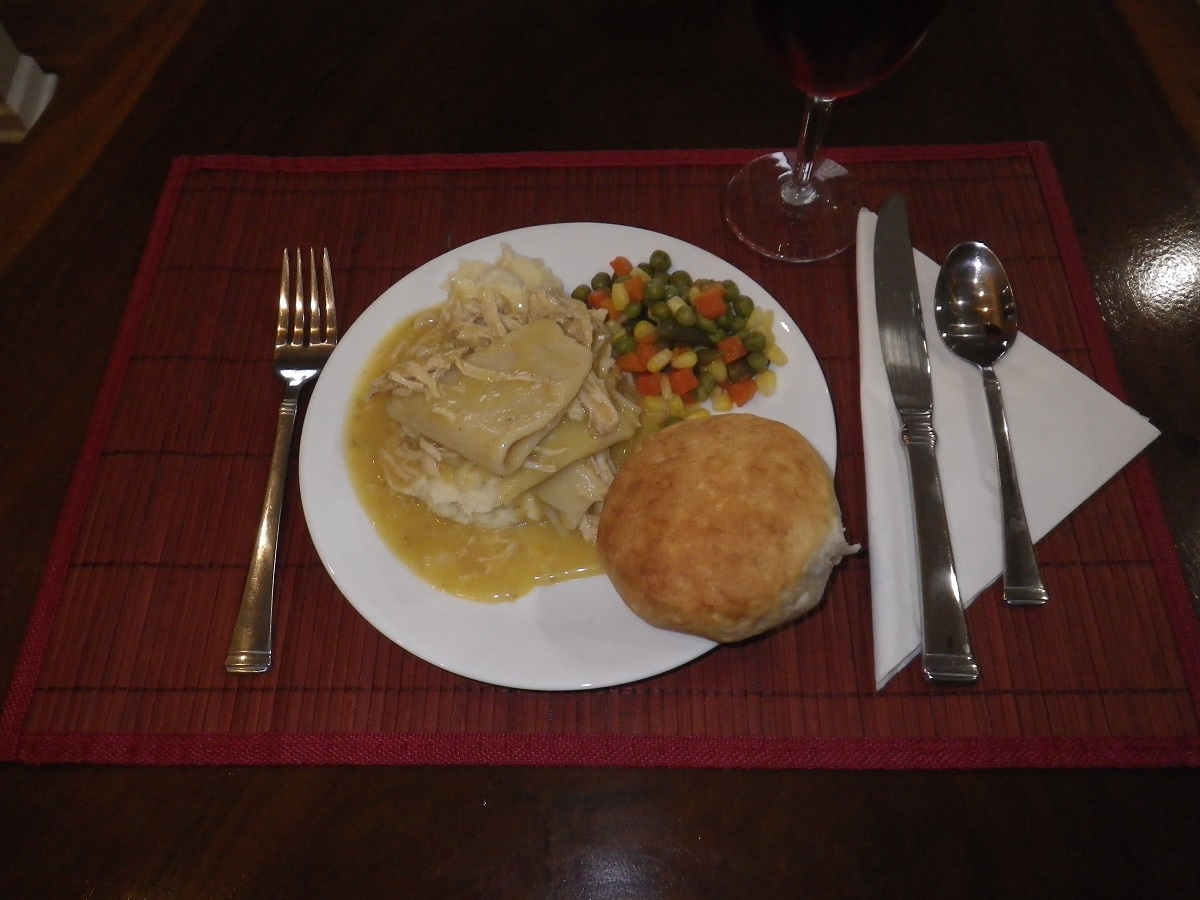|
The growing-up years were mostly a wonderful experience. One of the best was spending several weeks every summer with Aunt Margie and Uncle Carroll at their cabin in the mountains of the Angeles National Forest. She prepared the most wondrous foods in her little kitchen overlooking Big Tujunga Creek. One of those dishes was chicken and gleasants.
What is, you may well ask, a gleasants? That is a question I have pondered many a night for years and years. Is it a dumpling? Or, is it a noodle? Where did it come from? Is it German, perhaps French or maybe even Scandinavian? I can’t find a single cookbook in the library that contains a gleasants recipe and yet there are many on the internet with old family recipes and all very much alike. Each of them also express confusion over the origins of the dish. One day I hope to find the answer.
Aunt Margie would roll out the dough by hand using a rolling pin. After getting just the right thickness she would cut them into squares including the raggedy ones around the edges. She would let them air dry while she prepared the chicken. That was usually a whole chicken and when cooked and then cooled she would pull and shred the meat. The chicken cooking water was used to cook the gleasants. After the gleasants were cooked to a chewy goodness the chicken was added back to the pot and it was ready to serve.
|


